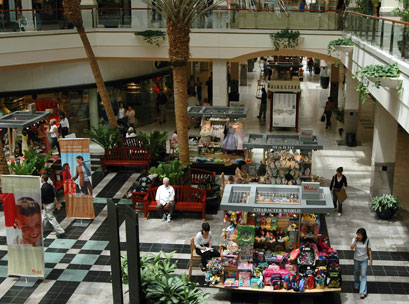Retail property is in a fascinating transition worldwide.
Here are five key property trends occurring across many mature markets around the globe.
1. Diversification of anchors.
Shopping centre operators in mature markets are now broadening their menu of potential anchors to differentiate their centres and loosen the decades-long dependence on the old department store/discount department store/supermarket formula.
The shift is toward tenant types that fall into one of two categories.
First are those that originated with standard footprints but now have an appetite to move up to large formats and cluster with their competitors.
These include “experiential” anchors, fast fashion retailers, designer boutiques and casual and white tablecloth restaurants.
The second category are comprised of niche anchors that address a specific local demand, such as the urban commuter stores in Hong Kong malls that offer an edited range of groceries and general merchandise for affluent professionals.
2. Increasing reliance on the “barbell” retailers.
The barbell effect (also called the “hourglass effect” and “hollowing the middle”) refers to the thesis that consumers are allocating an increasing share of their spending to retailers at either end of the price continuum.
This is reflected in the steady shift of soft goods market share in recent years in North America and Europe to fast fashion retailers (at the value end) and status brands (the upscale end), to the detriment of the stalwarts of the middle market that dominated shopping centres in the 1990s – the lifestyle brands and the mid-priced department stores.
A recent study of more than 100 mainstream and online Australian retailers by the Commonwealth Bank estimated that in 2011 the fashion specialty middle market experienced growth that was approximately eight per cent below its historical average.
Both the low end, which grew at four per cent below average, and the high end, which grew at about five per cent above average, outperformed the middle.
The phenomenon is not only evident in fashion but in other important categories such as food, resulting in massive losses to the conventional supermarket sector in the US which has ceded market share to dollar stores, drug stores, warehouse clubs and supercentres (the value end), and pricey lifestyle alternatives (Whole Foods Market, the upscale end).
As the losing retailers have weeded back their store portfolios, shopping centre operators have responded by devoting more space to the winners.
Shopping centres are now swimming with fast fashion, high end technology, and gourmet food.
This trend is set to intensify in the next five years and make a particular imprint on places like Australia, where the middle market is relatively overcooked; and Canada, where consolidation among mass market anchors has provided a huge opening for cheap chic retailers to enter the market on a large scale.
3. Resurgence of factory outlet centres.
Factory outlet centres are the darlings of international development at the moment as the model has evolved and mature retailers focus on reaching previously untapped consumer segments by rolling out value stores.
The factory outlet segment has made huge strides to up its game in recent years.
In North America, Europe, and emerging markets, amenities have been upscaled, retailers have shifted from a clearance model to a “made for outlet” model with significantly higher margins, and the centres have gone from being unanchored to anchored.
These improvements have been overseen by highly professional, outlet-focused companies that have internalised and learned from the harsh lessons of the sector’s wild west past.
At the end of 2011 there were dozens of outlet projects at various stages of planning and development in North America, Eastern Europe, Asia, and Latin America.
Moreover, outlet centres are adopting new hybrid formats as they cohabit with power centres, regional malls, mixed use and gaming projects.
4. Investing in technology.
Shopping centre operators have not been standing idle while the technology revolution passes them by.
At this point, the revolution belongs mostly to retailers, but landlords are increasingly dabbling in social media and smart phone apps like Shopkick that confer cool and attempt to materially influence where sales are transacted.
Others have put wifi in their centres. One thing is for sure – shopping centres are still the most important distribution channel for retail goods and services, and the owners will make whatever investments are necessary to keep it that way.
5. Pause in new developments.
In the US, net additions to retail space have been less than one per cent for the past three consecutive years, and this year will see a continuation of the same trend.
In Canada, new development is also on the skids, rising by 1.3 per cent in 2011, well below historical norms.
In Europe, the same situation obtains with less than one per cent annual growth in floorspace and much less than that if you exclude the emerging markets of Russia, Turkey and Poland. Meanwhile, in Australia, the annual growth of new retail floorspace in the past several years has fallen to less than half its historical average.
The cause of the pause varies across different countries.
While demand has returned in the US, previous excesses on the supply side mean that occupancy remains weak, rental growth patchy and the rationale for further new construction very limited.
Elsewhere, a shortage of financing, weak consumer demand and retailer uncertainty about where to put capex dollars are among the leading causes of low supply growth.
* Michael Baker is principal of Baker Consulting and can be reached at michael@mbaker-retail.com and www.mbaker-retail.com






